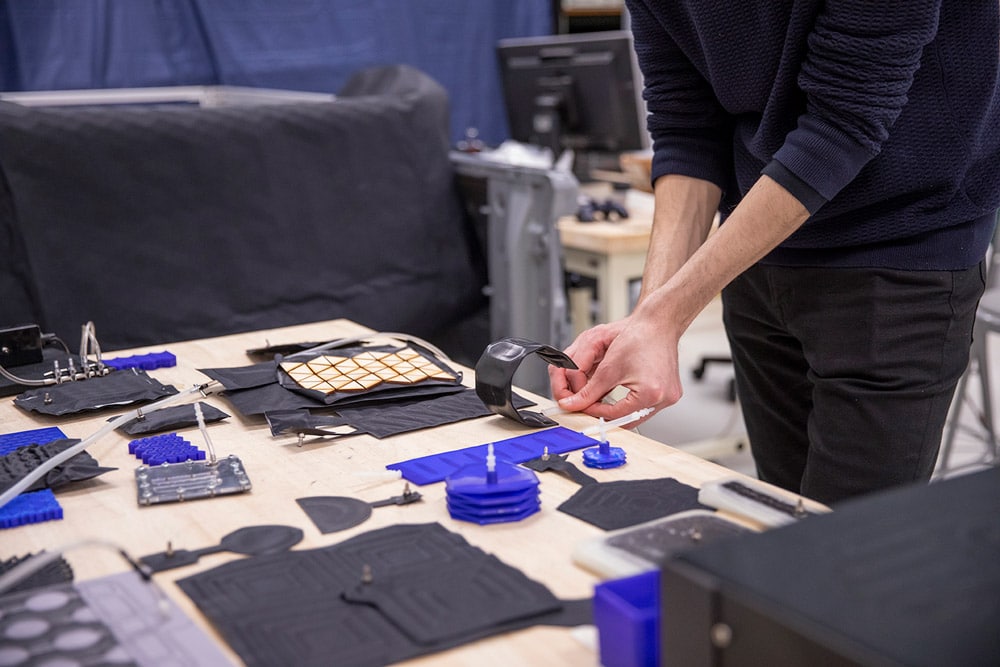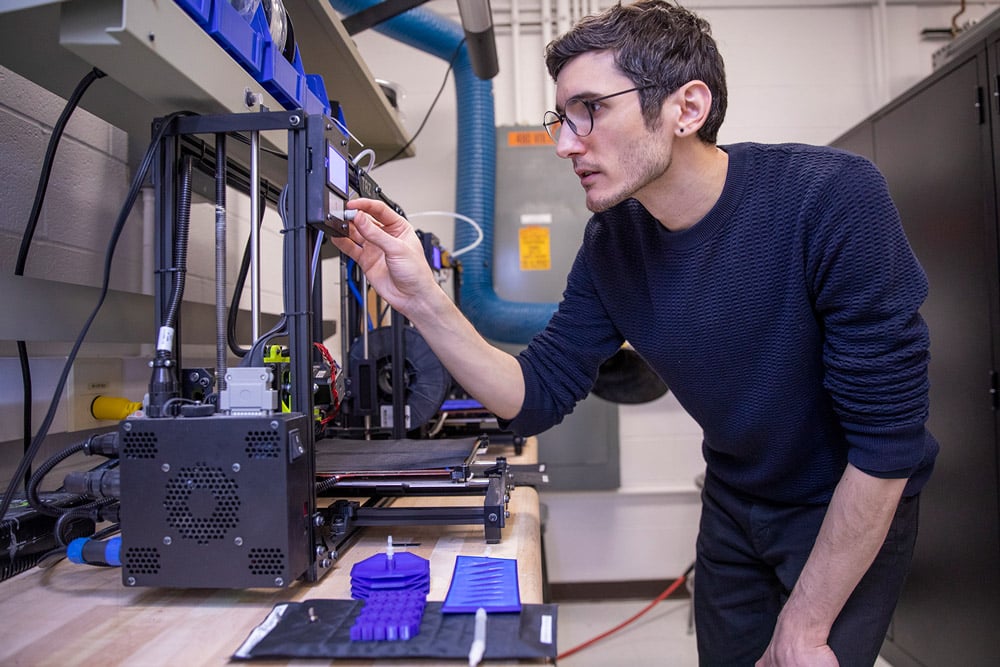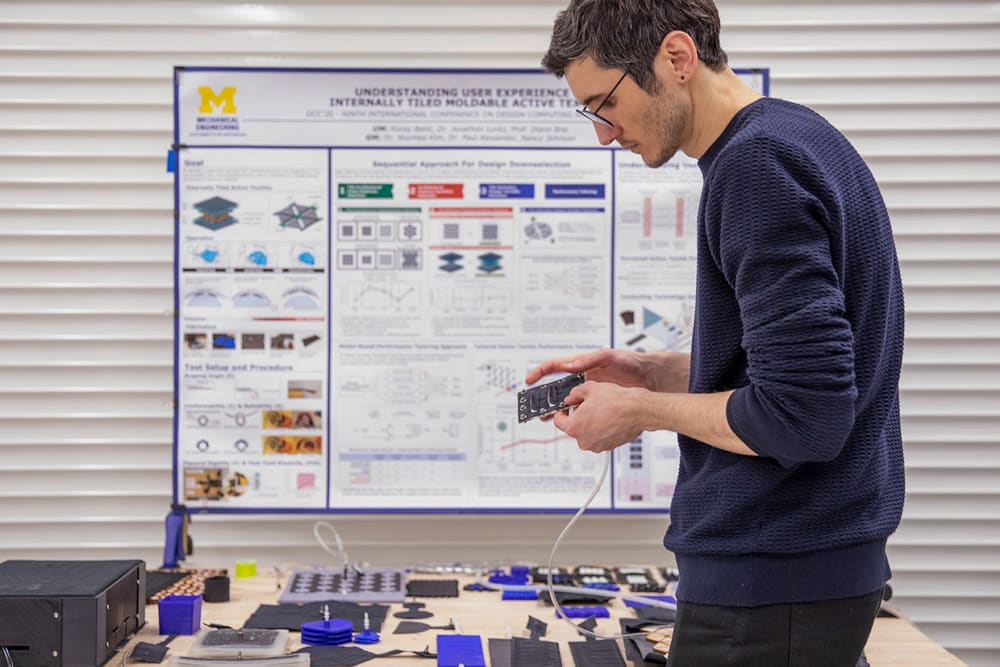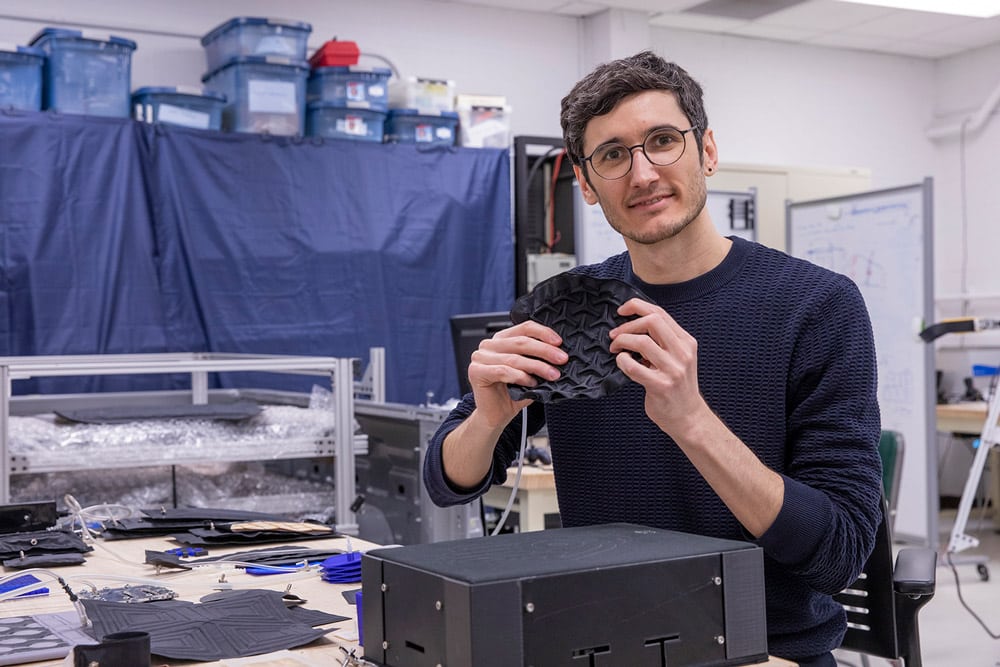ISD Design Science PhD Candidate Koray Benli ’23 Harnesses the Integrative Power of U-M’s World-Class Faculty and Facilities to Design Structurally Adaptable Multi-Mode Consumer Products
Sports Illustrated labeled the 1992 USA Olympic basketball team as the “Dream Team” on the cover of its February 18, 1991, issue.
This USA Olympics team — the first to feature NBA players and the first to sport the SI moniker — is widely known as the greatest sports team ever assembled.
Likewise, Design Science PhD Candidate Koray Benli ’23 believes he is a member of another Dream Team. This one is academic in nature and a great collection of university faculty, graduate students, facilities, technology, and tools needed to create the environment for his consumer design science research and exploration.
“The University of Michigan is among the best colleges in the world,” said Benli, 34, who expects to graduate in April 2023. “That’s because we’re surrounded with top experts inside and outside the university to help us identify, investigate, and solve complex integrative problems from very different angles and perspectives.”
Rethinking Consumer Products
Benli’s doctoral research is focused on developing the design science foundation enabling a systematic early-stage design space exploration for emerging technologies that provides a basis for the design of structurally adaptable multi-mode products. These products provide multiple sets of specialized functionalities on demand as they switch from one mode to another, affording physical interaction with users.
He has three main design research objectives:
- Establish a technological foundation by developing a particular technological system, which we call a constrained layer pneumatic systems.
- Support the design of these multi-mode products by hierarchically decomposing them into their constituent functional and architectural components.
- Develop a design approach to balance the multi-modal performance across different modes.

Stop: Hammer Time
As part of his dissertation, Benli has been developing an emerging technological system based on a set of pneumatic operations, which can activate these types of structural transformations on demand without requiring manual effort from users.
To illustrate this, Benli provides three simple examples: claw hammer, Swiss army knife, and an adaptable cutting board.
“The claw hammer has been in use for centuries,” he said. “It provides two main modes: hammering mode and nail pulling mode. As a user, I can switch between these modes by changing the orientation of the tool in my hand manually. In this case, the product architecture is non-reconfigurable. The structural components are always visible even though we don’t need to use them actively.”
A Swiss army knife, he said, provides multiple modes: “We can switch between them in order to perform different functionalities, such as using it as a plier, as a screwdriver, or as a blade to cut something. In this case, the product architecture is modular. We can manually deploy or stow the individual structural components as we need them.”
These two examples of simple multi-mode products offer increased functionality but face constraints in terms of size, complexity, and manual effort required to switch modes. As opposed to multi-mode products relying on non-reconfigurable and modular structural components, there is a third category of multi-mode products employing adaptable structural components.
For example, the Chop2Pot cutting board enables chopping on a flat surface, and in its second mode it transforms into a kitchen scoop, making it easier for a user to transfer the food to a pan or pot. “In this case,” he said, “the product architecture is structurally adaptable. We make use of the same structural components in both modes. They are never idle as opposed to the previous examples.”
Hooray for ISD
Benli credits ISD for his valuable doctoral educational and research experiences and access to interacting and integrating with so many bright minds from all around the world with different cultural and educational backgrounds, viewpoints, and expertise.
“During ISD events, I learn something new from my fellow students and faculty,” he said. “The cross-pollination across disciplines has always been inherent, and that’s what makes ISD so unique. It provides a constant stream of unique learning opportunities and flexibility regarding what courses a student should be taking, especially in Design Science. My PhD program allows me the freedom to enroll in courses I thought were relevant to what I wanted to learn. I applied to ISD because it was multidisciplinary.”

Smart Choice
Benli has been a Graduate Student Research Assistant in the Smart Materials and Structures Lab, Mechanical Engineering, College of Engineering, for more than five years.
In this role, he works on developing a design foundation for constrained layer pneumatic systems and exploring innovative user-interacting pneumatically operated applications focusing on interior design of future autonomous cars by collaborating with leading industry partners from General Motors’ Research and Development departments.
“My classes in University of Michigan Design Science, Psychology, Industrial Operations and Engineering, and Architecture help me in my job every day,” he said. “I learned about many structured approaches, such as quality function deployment, Kansei Engineering (a product development methodology that translates customers’ and users’ feelings, impressions, and emotions into concrete design parameters), conjoint analysis, a wide range of statistical methods, conducting experiments and collecting empirical data in lab environment, and hands-on experience regarding designing tangible interactions.”
This wide spectrum of toolset allows him to conduct PhD research with more confidence, he said.

Scooting Along
Growing up in Turkey, Benli always wanted a scooter.
His parents thought it might be dangerous and did not get him one so at age 7 he decided to look for parts around his neighborhood to create one of his own. It was at this time he became fascinated with innovation and how consumer products were made.
“When you try to innovate, you come up with new ways of doing things,” he said.
Later in college in Turkey, he credits this curiosity and willingness to learn and adapt to helping him earn many awards, including first prizes in the Unilever ldeatrophy 12th Edition in 2014, as well as Profilo Sustainable Mini Oven Project Competition and Turkish Packaging Design Student Competition both in 2011.
Over the years, he has been on many dream teams that received patents and earned several scholarships, including the Fulbright PhD Scholarship at U-M in 2016-2018, Scientific and Technological Research Council of Turkey (TUBITAK) from 2012-2014, Ankara Rotary Club Success Scholarship from 2009-2012, and the Izmir Chamber of Commerce Success Scholarship from 2009-2012.
Comfortably Uncomfortable
Benli’s advice for future ISD PhD candidates is to not be afraid to ask questions.
“It’s OK to feel lost,” he said. “The path to the finish line has rarely been straightforward. Seek help from wherever you can find it. Stretch yourself, seek help, and be uncomfortable exploring your passions.”
